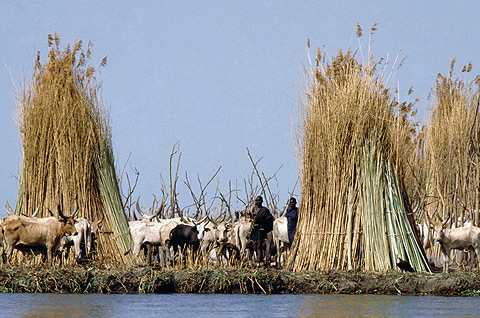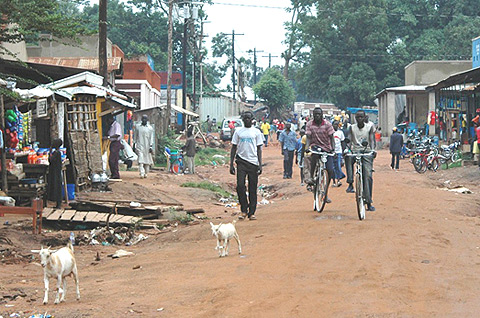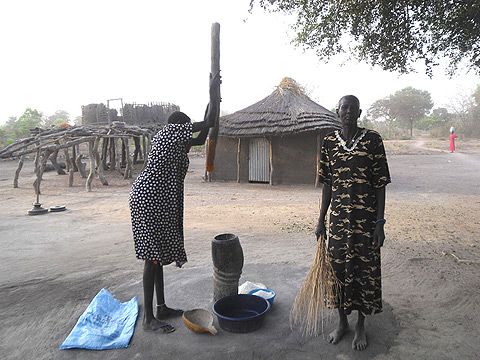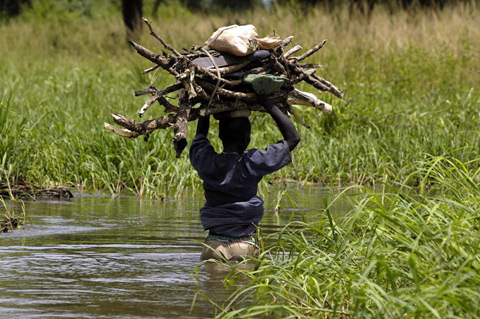The Republic of Sudan is Africa’s largest country and is located in the north-east of the continent. One of the poorest countries in the world, it has been afflicted by a series of incompetent and corrupt governments, war, drought, famine and a staggering foreign debt. It has an ethnically and linguistically diverse population and a history of disputes between the Arab Muslim north and the African Christian south regarding religion, culture and political autonomy.
Lots of Arabs in the north … Nilotic (African people) in the south. Southern Sudan faces a lot of problems. People are disappointed. We are not allowed to have self-determination.
(Alam Mathiang Machot)
Sudan is divided by nature. Black southerners are the owners of this land. This land is ours.
(Makuei Ajak Ariik)
Economy & infrastructure
The central government in the capital, Khartoum, has marginalised southerners and other ethnic groups, including the Darfurian people in the west. Basic services, including roads, drinkable water, electricity, schools and hospitals have been neglected. Even the discovery of oil in southern Sudan in 1978 and the associated huge oil revenues has not brought any improvement.
They’ve taken the oil from southern Sudan leaving the south in darkness.
(Alam Mathiang Machot)
Geography
Southern Sudan has a tropical climate with a wet season lasting from April to October and an average rainfall similar to Sydney’s. In the centre is the Sudd, a vast expanse of lakes and lagoons. It supports a profusion of wildlife.
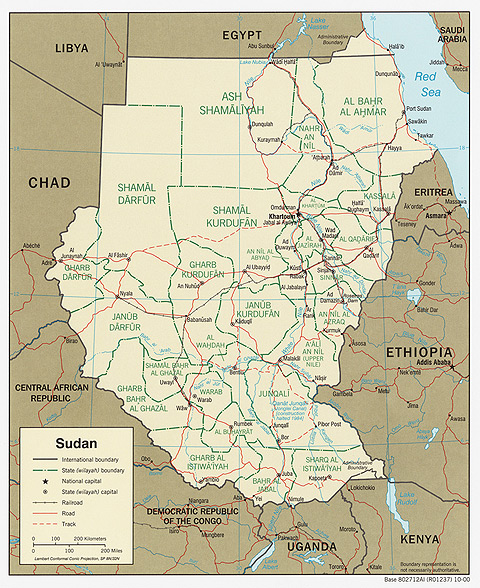
Map of Sudan. Courtesy: Norman B Leventhal Map Centre at the Boston Public Library, Flickr Creative Commons
People
The southern Sudanese have a strong oral tradition; problems are solved through public discussion and agreements are verbal, witnessed by others. Family is important. Marriages are traditionally arranged by the parents of the couple.
The south is home for many tribal groups and associated languages. The largest tribes are the Dinka and Nuer. They live mainly around the swamps on the Nile and Bar el Ghazal rivers and are located in the extreme south together with the Bari, Acholi and Lotuhu people. The Azande, Bor and J Luo tribes are located in the west of the region.
Living conditions
There are few large towns in southern Sudan and most people live in small villages in round, thatched houses. Most do not have electricity. People herd cattle at riverside camps in the dry season and grow millet and other grains in fixed settlements during the rainy season. Fruit and vegetables for consumption are grown seasonally. Goods are used as currency rather than money.
We don’t use money. Our people keep cattle and rear goats, sheep for marriage purposes and consumption.
(Edward Massimino)
Some [houses] used to go up to ten year, twelve years without being renovated … Some people have three or four houses, one for sleeping, one for cooking, one for the food, one for the goats.
(Alam Mathiang Machot)
Some houses that are built down low … maybe a hyena, tiger or lion will come during the night and break in. There will be a young gentleman who will sleep with [the goats] and are supposed to protect them.
(Alam Mathiang Machot)
No electricity. No refrigeration, fresh food. We eat seasonally … Different kind of fruit here. Indigenous fruits in Africa. Food in Sudan is organic.
(Alam Mathiang Machot)
Comparison of living standards between Australia and Sudan (2009)
| Sudan | Australia | |
| Total population | 42.3 million | 21 million |
| Life expectancy | 57.4 years | 81 years |
| Total adult literacy rate | 60.9% | 99% |
| Infant mortality rate | 61 per 1,000 | 5 per 1,000 |
| Unemployment rate | 30% | 5.5% |
| Deaths from war and famine | 2 million | Nil |
| Child labour (5-14 years) | 13% | Nil |
| Internally displaced people | 4.8 million | Nil |
| People undernourished | 26% popn | Nil |
| Average annual income | $960 | $36,000 |
| Government expenditure – defence | 28% GDP | 6% GDP |
| Government expenditure – health | 1.5% GDP | 15% GDP |
| Government expenditure – education | 8% GDP | 10% GDP |
Extracted from United Nations Children’s Fund (UNICEF) statistics, updated 7 April 2009

